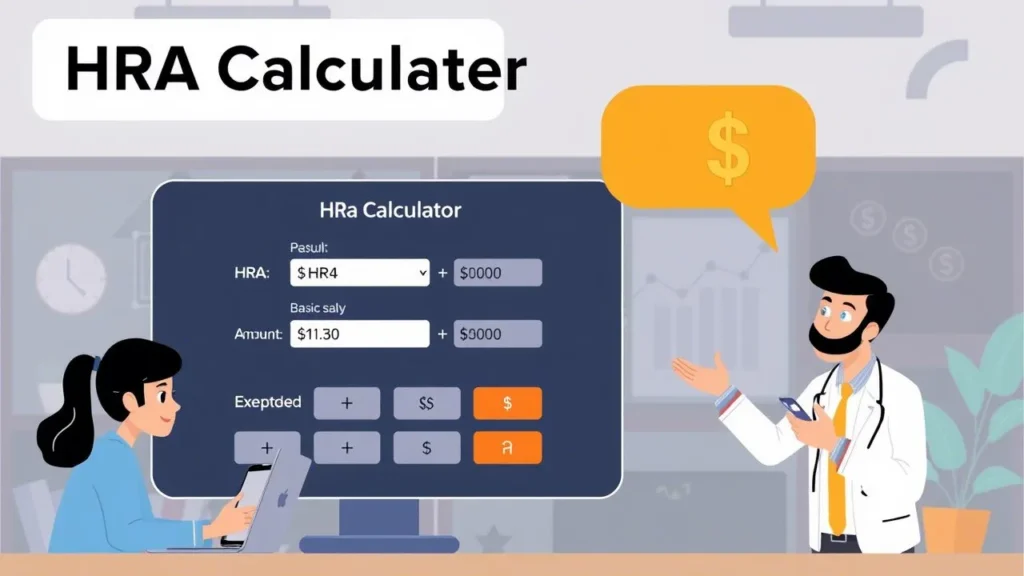Accelerated Aging Calculator
Estimate product shelf life under accelerated conditions
Accelerated Aging Factor
-
Equivalent Real Time
-
Projected Shelf Life
-
Degradation Rate Increase
-
About Accelerated Aging
Accelerated Aging is a method of estimating shelf life of products by testing them under high temperatures and other stress factors. This calculator predicts real-time shelf life based on accelerated testing data using the Arrhenius equation and the Q10 rule.
The calculator uses the formula: Real Time = Accelerated Time × Q10^((Accelerated Temp - Storage Temp)/10)
Where:
- Q10 is the factor by which the degradation rate increases with a 10°C temperature rise
- Accelerated Temp is the elevated test temperature
- Storage Temp is the normal storage temperature
Typical Q10 values for different product types:
- Pharmaceuticals: 2.0-3.0 (commonly 2.0)
- Medical Devices: 1.8-2.5
- Food Products: 2.0-4.0
- Cosmetics: 2.0-3.5
When in doubt, consult product-specific stability data or use 2.0 as a conservative estimate.
Important limitations to consider:
- Assumes temperature is the only accelerating factor
- Assumes linear degradation kinetics
- May not account for phase changes or complex reactions
- Results are estimates - real-time testing is always preferred
For regulatory submissions, consult appropriate guidelines (ICH, ISO 11607, etc.)
This calculator is for informational purposes only. Consult with qualified professionals for product stability assessments.
© Accelerated Aging Calculator | Free to use
Accelerated aging testing is an important process used in industries such as pharmaceuticals, medical devices, food, and cosmetics. It helps manufacturers quickly determine the shelf life of products. This test keeps products under high temperature and stress conditions, which simulate the effects of long-term storage in a short time. Using our Accelerated Aging Calculator, you can easily find out the correct temperature and keep your products safe.
What is Accelerated Aging?
Accelerated aging is a testing method that helps predict the shelf life and durability of products. It exposes products to harsher conditions (such as high temperature) than normal storage conditions to predict how the product will behave in the long term. The method is based on the Arrhenius equation and the Q10 rule, which describe how increasing temperature affects the speed of product degradation.
With this testing, manufacturers can estimate in real-time how a product will perform 2-3 years from now, in just a few weeks or months, without having to wait for years.
Why is Accelerated Aging Testing Important?
- Time Saving: Real-time testing takes years, but accelerated testing calculator gives results in less time.
- Cost Effective: This calculator saves the cost of long testing period.
- Helps in following regulations: This method is useful to prove product stability according to international standards such as ICH or ISO 11607.
- Product Development is Fast: If there is any degradation issue, it is quickly detected and improvements can be made, so that the product can be launched in the market quickly.
Introducing the Accelerated Aging Calculator
This Accelerated Aging Calculator is a free and easy tool that estimates the shelf life of products based on data from accelerated aging tests. It is designed to be easy to use by anyone, whether you are from the technical field or not. Let’s know its features, working method and tips for use.
Key features of this calculator:
- Simple interface: Clean design, easy to understand input fields, and compatible with both mobile and desktop.
- Enter complete information: You can enter the product type, normal storage temperature, accelerated test temperature, Q10 factor and test duration.
- Real-time check: An alert appears as soon as you enter the wrong input – temperature, Q10 value and test duration are all validated.
- Detailed results: You will get accelerated aging factor, real-time equivalent, projected shelf life and degradation rate, all in a nice format.
- Information and understanding: The Q10 value, limitations of the calculator, and how it works are explained in separate tabs.
- Printing: Results can be printed and used in reports or saved for documentation.
How the Accelerated Aging Calculator Works
This Accelerated Aging Calculator estimates shelf life using the Arrhenius-based Q10 formula. The formula is something like this:
Real Time = Accelerated Time × Q10^((Accelerated Temp – Storage Temp)/10)
Where:
- Q10: This is a factor that tells how much the degradation rate of the product will increase if the temperature increases by 10°C (usually between 1.8–4.0 but depends on the product).
- Accelerated Temp: The highest temperature used during testing.
- Storage Temp: The normal temperature at which the product is usually kept.
- Accelerated Time: How long the accelerated testing was.
The Accelerated Aging Calculator converts the test duration into days (you can enter days, weeks, or months), then calculates the aging factor to derive the real-time shelf life (expressed in days, weeks, months, or years). It also shows by how much percentage the degradation rate has increased due to the difference in temperature.
How to Use the Accelerated Aging Calculator
This Accelerated Aging Calculator is very user-friendly, and it will be very simple for you to use it. Just follow these steps given below:
1. Select Product Type
Choose the type of your product:
- Pharmaceuticals (medicines)
- Medical Devices (medical equipment)
- Food Products (food items)
- Cosmetics (makeup/skincare)
- Or any other category
This step is important because the Q10 factor is set according to it.
2. Enter Normal Storage Temperature
Enter the temperature at which the product is usually stored (in °C).
- Example: If it is stored at room temperature, write 25°C.
3. Enter the Accelerated Test Temperature
Enter the highest temperature used for testing. It should be higher than normal storage.
- Example: 40°C
4. Set the Q10 Factor
The default Q10 value is 2.0, but you can change it depending on the product:
- Pharmaceuticals: 2.0–3.0
- Medical Devices: 1.8–2.5
- Food Products: 2.0–4.0
- Cosmetics: 2.0–3.5
If in doubt, check the “Q10 Guide” tab.
5. Enter the Test Duration
How long was the accelerated testing? You can enter days, weeks, or months.
- Example: 3 months (90 days)
6. Press the Calculate button
The calculator will start working as soon as you press the “Calculate Shelf Life” button. Wait a bit, the loading spinner will appear, and then the result will be displayed in a clear grid.
7. Check the results
The result will show all the following:
- Aging Factor – How fast the testing took place
- Equivalent Real Time – How much time it will take in normal storage
- Projected Shelf Life – Total shelf life of the product
- Degradation Rate Increase – How fast the product got spoiled
If you want, you can save the result by using the “Print Results” button.
8. View the tabs for additional information
- “How It Works” – How does the calculator work?
- “Q10 Guide” – details about Q10 factor
- “Limitations” – what are the limitations of the calculator?
- Example Calculation – Understand in Simple Language
Example Calculation
Suppose you’re testing a pharmaceutical product with:
- Storage Temperature: 25°C
- Accelerated Temperature: 40°C
- Q10 Factor: 2.0
- Test Duration: 3 months (approximately 90 days)
The calculator computes:
- Aging Factor: Q10^((40 – 25)/10) = 2.0^(1.5) ≈ 2.83
- Equivalent Real Time: 90 × 2.83 ≈ 255 days (or roughly 8.5 months)
- Projected Shelf Life: Approximately 8.5 months
- Degradation Rate Increase: (2.83 – 1) × 100 ≈ 183%
These results indicate that 3 months of accelerated testing at 40°C is equivalent to about 8.5 months of storage at 25°C.
Understanding Q10 Values
The Q10 factor is central to accelerated aging calculations. It represents how much the degradation rate increases with a 10°C rise in temperature. Typical Q10 values vary by product type:
- Pharmaceuticals: 2.0–3.0 (commonly 2.0 for conservative estimates)
- Medical Devices: 1.8–2.5
- Food Products: 2.0–4.0
- Cosmetics: 2.0–3.5
When unsure, use a Q10 of 2.0 for a conservative estimate or consult product-specific stability data. The calculator’s Q10 Guide tab provides these ranges for quick reference.
Limitations of Accelerated Aging
While the Accelerated Aging Calculator is a powerful tool, it has limitations:
- Single Stress Factor: Assumes temperature is the only factor accelerating degradation, ignoring humidity, light, or other stressors.
- Linear Degradation: Assumes degradation follows a linear pattern, which may not apply to complex reactions or phase changes.
- Estimates Only: Results are predictive and should be validated with real-time testing for regulatory purposes.
- Regulatory Compliance: For submissions to agencies like the FDA or EMA, consult guidelines such as ICH Q1A or ISO 11607.
The calculator’s “Limitations” tab highlights these constraints, encouraging users to verify results with real-world data.
Along with Accelerated Aging Calculator, check other Battery Charge Time Calculator from here.
Frequently Asked Questions
Accelerated Aging Calculator helps to estimate the shelf life of a product (i.e. the time it takes for it to spoil). It tests under extreme conditions like high temperature to determine how long the product will last under normal conditions. It uses the Arrhenius Equation and the Q10 Factor to convert test data under extreme heat or pressure into real-time shelf life. This tool is especially useful for industries like pharma, medical devices, food, and cosmetics as it helps to determine the life of the product without waiting for years.
The Q10 factor depends on the type of your product—the value varies for different products, such as pharmaceuticals (2.0–3.0), medical devices (1.8–2.5), food products (2.0–4.0), and cosmetics (2.0–3.5). If you don’t know the exact Q10 value, check the recommendations in the “Q10 Guide” tab of the calculator or look up your product’s stability data; otherwise, use the default Q10 value of 2.0 to be safe.
This Accelerated Aging Calculator is assessed according to the Q10 rule, in which temperature degradation is considered a major factor. This is good for initial assessment, but for regulatory submissions, the results must be validated by conducting real-time testing. Guidelines such as checking ICH Q1A or ISO 11607, so that compliance can be maintained.
This Accelerated Aging Calculator assumes that temperature is the biggest factor in degradation. It does not account for humidity, light, or other stress factors. If you want exact results, confirm that temperature is actually having the biggest effect. Otherwise, extra testing will be needed to check other variables.










